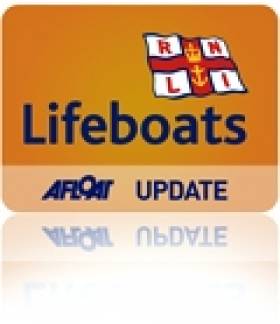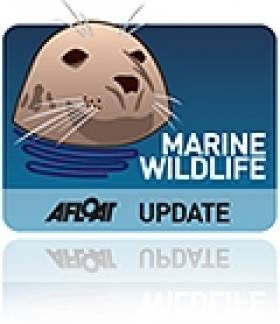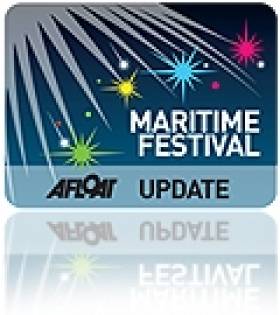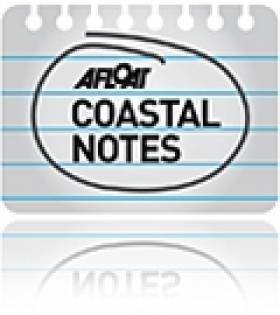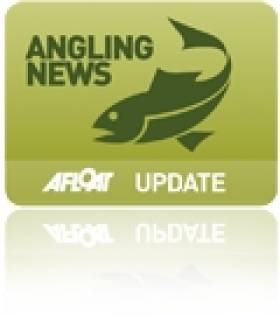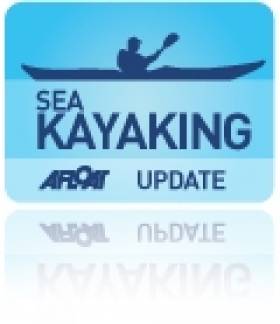Displaying items by tag: Northern Ireland
Belfast Lough Hosts Major Maritime Exercise This Weekend
#LIFEBOATS - The Larne Times reports that Larne RNLI will be involved in a major maritime exercise in Belfast Lough this Sunday 23 September.
As many as 365 people will take part in 'Exercise Diamond', which involves vessels from the UK coastguard along with lifeboats, helicopters, search and rescue co-ordinators and other emergency services.
The exercise is intended to "test the major incident plans for all the organisations that would be involved should a major maritime incident happen in Northern Ireland," said controller Steve Carson.
Invasive Sea Squirt May Be in Strangford Lough
#MARINE WILDLIFE - The Northern Ireland Environmental Agency (NIEA) has indicated the possible presence of Japanese sea squirt on the bed of Strangford Lough, as the Press Associaton reports.
Experts are attemping to confirm the identity of the invasive organism that has posed a threat to mussel and scallop populations across the Irish Sea in north Wales.
The sea creature, Didemnum vexillum, spreads like a blanket across the seabed and other surfaces, smothering shellfish and other marine life in the process. It is often transported over large distances on boat hulls and fishing equipment.
It was discovered late last year in Holyhead marina, and Welsh athorities spent £250,000 on an extermination project to prevent its spread into the Menai Strait - at the heart of the region's shellfish industry.
Dr Rohan Holt, a senior scientist from the Countryside Council for Wales, has now been called in to advise on how to manage the threat should it indeed be confirmed as the Japanese sea quirt.
Meanwhile, members of the public have been urged to report any possible sightings of Japanese sea squirt with photos through the 'Alien Watch' section of the Invasive Species Ireland website.
The Press Association has more on the story HERE.
Down Coastguard Officers Commended for Rescues
#COASTGUARD - The Newry Times reports on the award of the Chief Coastguard's Commendation to two Co Down coastguard officers for separate rescues last year.
Keith Campbell and John Kirkpatrick of the South Down Coastguard Team were recognised by the Maritime and Coastguard Agency at an awards ceremony in Newcastle Coastguard Station last Wednesday in what was also a first for Northern Ireland.
Alliance Party Councillor Patrick Clarke congratulated the officers for showing "exemplary bravery in carrying out their duties last year saving the lives of adults and children at separate incidents at Dundrum Inner Bay."
Chief Coastguard Peter Diamond from headquarters in Southampton made the presentation at the event attended by senior coastguard officers and officials from other emergency services.
Harbour Porpoises Get Protection With New NI Marine Zones
#MARINE WILDLIFE - Protection for harbour porpoise off the north coast of Northern Ireland has been assured by the creation of two new areas of marine protection, as BBC News reports.
The new Special Areas of Conservation off Co Antrim encompass the sea and seabed surrounding the Maidens in the North Channel off Larne - protecting reefs and grey seals - and spots adjacent to the Giant's Causeway and Portrush Skerries in the north of the county.
Both areas are also considered of great importance to harbour porpoises, and according to Environment Minister Alex Attwood, the designation "comfirms that their numbers are significant throughout the year".
He added: "I hope this encourages people to visit the area to get a glimpse of these beautiful animals."
Campaigners are hoping for further coastal protections to be guaranteed by the Marine Bill, which will be debated at Stormont ths Autumn.
As reported earlier this year on Afloat.ie, the Northern Ireland Marine Task Force brought togethter politicians, environmentalists, fishermen and wind farm developers to ensure the new bill will deliver for all sea users.
National Marine Week Kicks Off in Northern Ireland
#MARITIME FESTIVALS - National Marine Week has kicked off in Northern Ireland, with events taking place along the coastline till Sunday 12 August.
According to BBC News, events organised by the Ulster Wildlife Trust for the festival fortnight include a ramble on the shore of Carlingford Lough, rummaging in rock pools in Portrush, Co Antrim and Annalong, Co Down, and a coastal walk along Belfast Lough as previously reported on Afloat.ie.
There will also be a survey of the coastline's plants and wildlife considered the best indicators of climate change as part of the UK-wide Shore Thing Project.
"National Marine Week is the perfect opportunity for people to get out and explore the seaside and experience for themselves the diversity of wildlife that our seas and shores have to offer," said the Ulster Wildlife Trust's Kerri Whiteside.
"As well as being lots of fun, we hope our events will help everyone to understand the importance of protecting our vital marine habitats for the future, and inspire people to join us on our journey towards living seas, where wildlife thrives from the depths of the oceans, to the coastal shallows."
Blind Surfers Hit the Waves to Raise Funds for Guide Dogs
#SURFING - Blind surfers from throughout Northern Ireland took to the waves recently to raise money for Guide Dogs NI, as UTV News reports.
The surfers converged on Benone beach in Limavady last weekend for their first-ever sponsored surf, using specially adapted boards - and donning wetsuits against the cold of the Atlantic in this wintry summer.
As previously reported on Afloat.ie, the same stretch of sand hosted Northern Ireland's first ever disabled surfing festival last month.
Like that event, this fundraiser was also supported by the Long Line Surf School, which is specialising in courses for people with various disabilities.
"To get a wetsuit on, jump on a surfboard and trust a surf instructor to be in complete control is something that I would find hugely intimidating myself," said the school's Dan Lavery.
"But we created a relaxed atmosphere for the lesson, just had a laugh and just surfed some waves. It was so rewarding to be able to provide this experience and to be able to meet these amazing people."
UTV News has more on the story, including a photo gallery, HERE.
NI Waters Under Threat by Pollution and Overfishing
#COASTAL NOTES - The Belfast Telegraph this week is running a special series investigating the environmental destruction of Northern Ireland's coastal and inland waters.
As the Telegraph's Linda Stewart writes: "Northern Ireland’s once rich seas are in danger of turning into dead zones devoid of marine life."
The 'Save Our Seas' series aims to "uncover the shocking evidence of how our treasured marine and aquatic environments have been decimated by years of neglect and failure to curb over-exploitation."
Already it's been reported that Stormont faces a whopping €9.6 million fine from the EU over its failure to protect horse mussel reefs in Strangford Lough.
But according to the Telegraph, that is just one of a number of "disturbing" happenings beneath the waves, with diver Barbara Irvine reporting shocking amounts of human waste littering the sea bed.
Meanwhile, anglers are quitting the shoreline as once plentiful supplies of fish have simply vanished.
“I no longer shore fish as there is no point, there’s nothing there," says Gary Gregg of the Irish Federation of Sea Anglers.
“We’ve been blessed with a very good mixed fishery due to the confluence of the oceans coming together with cold and warm water, but we've taken too much.”
The series continues in the Belfast Telegraph all this week.
Anglers Warned to Watch Out For Overhead Power Lines
#ANGLING - Anglers in Northern Ireland have been warned to watch out for overhead electricity lines when they go fishing, as the Larne Times reports.
The safety call comes from Northern Ireland Electricity (NIE), which has launched its new 'FishSafe' campaign to remind the angling community of the dangers of fishing close to power lines.
“Electricity can jump gaps and even bringing a fishing rod close to overhead lines can be very dangerous," said NIE safety engineer Hal Steele, who noted that anglers are killed or injured every year through accidental contact with electricty lines.
The new campaign recommends fishing at a safe distance of at least 30 metres from electricty equipment to avoid accidents on the river.
Steele added that even non-metallic lightweight modern rods made from carbon fibre can conduct electricty, reminding that no angler is immune from the dangers of power lines.
The Larne Times has more on the story HERE.
New Giant's Causeway Visitors Centre Opens
#GIANT'S CAUSEWAY - The new Giant's Causeway visitors centre has opened to the public in Co Antrim in what's expected to be a big boost to tourism in the area.
Located close to the UNESCO World Heritage Site, the £18.5 million (€23 million) facility was designed to complement the coastal region's dramatic vistas, with a grass roof that allows it to blend in with the surrounding landscape, and columns that echo the causeway's thousands of naturally formed hexagonal basalt pillars.
As The Irish Times reports, the centre illustrates the story of the stones and the legend of Finn McCool and his Scottish rival who are said to have created the causeway during a mythical battle.
Already and award-winner for innovative design and sustainable features, the National Trust centre - located nine miles from Portrush - looks to welcome up to 780,000 visitors a year.
The Daily Telegraph has images of the new visitors centre and more on the story HERE.
NI Firefighters Take On Celtic Crossing Challenge
#KAYAKING - Firefighters from Northern Ireland are currently undertaking the challenge of a lifetime to raise funds for a local children's charity, as UTV Live News reports.
Starting yesterday, the eight-strong team from Belfast and Lisburn embarked on the Celtic Crossing Challenge, which involves climbing Ben Nevis in Scotland followed by a 100-mile cycle to the Mull of Kintyre, kayaking across the North Channel to Northern Ireland, another cycle from Cushendun to Newcastle via Belfast, and a final ascent up Slieve Donard.
The firefighters of the Specialist Rescue Team have put in months of training in preparation for the event, which will conclude on Tuesday, which involved many hours kayaking at sea and on local rivers and loughs.
Max Joyce of the Northern Ireland Fire and Rescue Service (NIFRS) told UTV: "We'll be hitting Cushendun - hopefully Cushendun and not Iceland - at about 1pm on Monday and we would love people to come along and cycle with us into Belfast."
The challenge hopes to raise £20,000 for CLIC Sargent, a charity supporting young children with cancer. It has special significance for Joyce, who was diagnosed with cancer himself in 1997.
"It's worth every minute if we can in some small way help children who are suffering from this hideous disease," he said.
UTV Live News has much more on the story HERE.


























